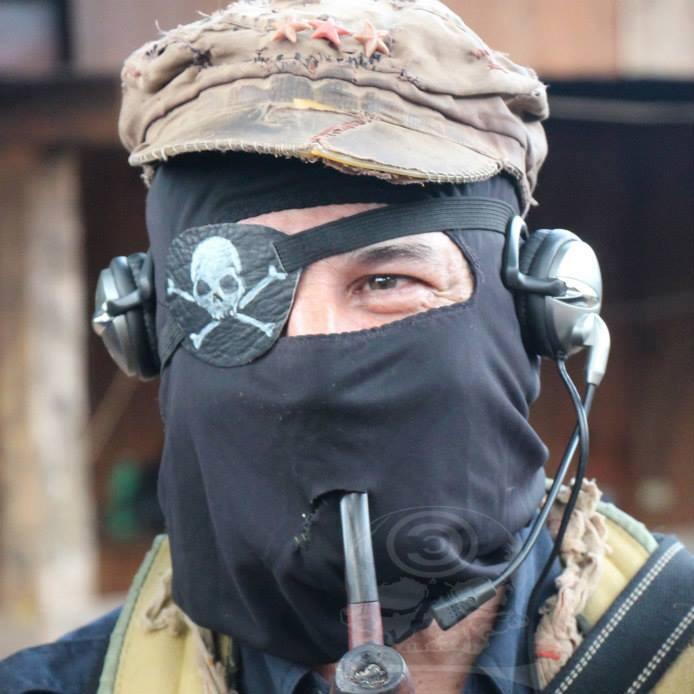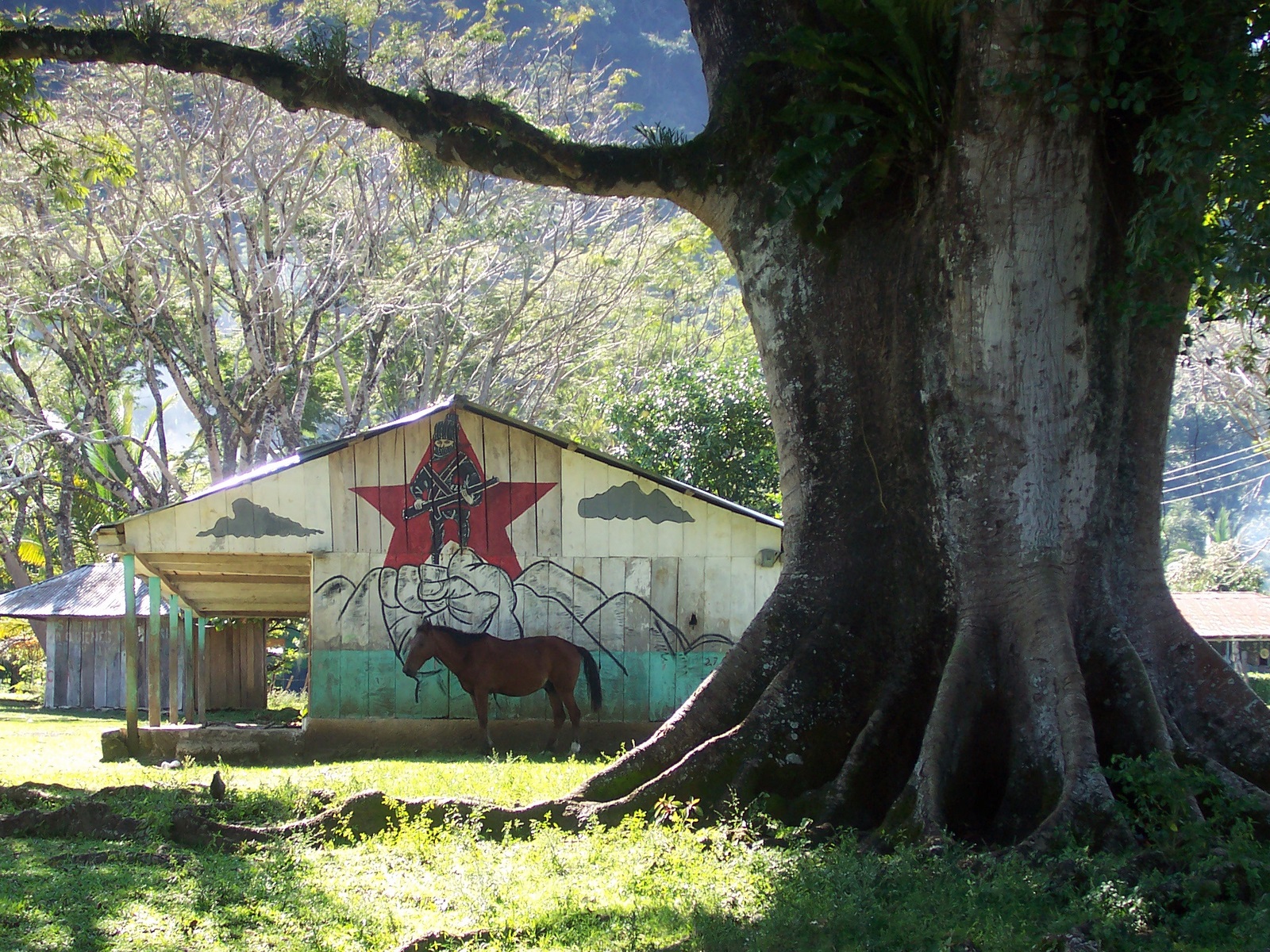Luis Hernández Navarro
This November 17 marks the 40th anniversary of the founding of the Zapatista Army of National Liberation (EZLN). Six people, three indigenous and three mestizos, one woman and five men, established a guerrilla camp in Tierra y Libertad, in the depths of the Desert of Solitude, where there was not a single soul. Nine months later, in August-September 1984, second captain Marcos joined the contingent.
Three years later (17/11/1986), in the El Recluta camp, Marcos took his exam for advancement to first captain. His influence in the region had grown significantly. He had at least 60 insurgents under his command. He became a subcomandante. A red five-pointed star was placed on his cap.

On May 26, 2014, Subcomandante Marcos died and ceased to be the spokesperson for the rebels. Subcomandante Moisés took his place. Marcos was reborn as Subcomandante Galeano, in honor of José Luis Solís López, an educator murdered by CIOAC paramilitaries. Just a few days ago, the communiqué “Do The Dead Sneeze?,” announced the death of SupGaleano. The message bears the signature of insurgent Captain Marcos.
The arrival of Captain Marcos in the jungle in 1984 coincided with the progress of the revolutions in Nicaragua, El Salvador and Guatemala. Radio Habana, Radio Sandino and Radio Farabundo Martí could be heard in the most remote communities of the Lacandon. It also coincided with large mobilizations of teachers, peasants and indigenous people,and with the advances of the progressive church in the region, headed by Bishop Samuel Ruiz.
The Chiapan family held power in the state, in what seemed like a novel by B. Traven. It was made up of abusive landowners who savagely exploited the indigenous labor force and exercised the right of pernada (the “right” of the landowner to avail himself of a new bride), practiced extensive predatory cattle ranching and cut down forests and jungles. For their protection and the subjugation of the discontented, they had white guards (private militia) and the services of the Army. The memory of these grievances experienced on the plantations and the pain of the poverty of the highland areas was on the very skin of the indigenous people who suffered them as indentured laborers or peasants who colonized the jungle in a modern exodus, but also by those who, as in Simojovel, Huitupán or Salto del Agua, continued to suffer them even at the age of 80.
Upon their return to Chiapas, the core promoters of the EZLN encountered hundreds of politicized and cohesive communities, a multitude of authentic indigenous leaders (many trained by the church) with no ties to the PRI, and social organizations with less and less organizational capacity. And under savage repression. The combination of the struggle for land, the appropriation of the productive process and the word of God formed a powerful associative cocktail that was nevertheless incomplete. Despite their organizational prowess, and of their training and struggle, discrimination, mistreatment and humiliation persisted. The armed route, promoted by the Zapatistas, gave the communities what the government had denied them: fulfilling their desire to know, their reconstitution as peoples, their pride in being who they were, their rebellious dignity.

It took only 10 years for that original nucleus of six people to become, like Spartacus, thousands. Beginning in 1992, the communities started to agree to declare war on the government. They kept the secret, until January 1, 1994, when they rose up.
This secrecy was also ensured by the teachers who worked in schools in Zapatista towns and saw how the fever of the revolution grew in them. Like the parents of their students, they kept silent about what was happening before their eyes.
One taught with two other teachers in a multi-grade school in San Miguel, near La Garrucha. Ever since he studied at the Normal Rural School in Mactumactzá, he had heard that there were armed groups on this side of the Lacantun River. They thought it was the Guatemalan guerrillas, but others knew that the EZ (which they called it without the E) was already organizing and visiting towns. Ideological groups were prohibited in the normal school, but the Partido de los Pobres (Party of the Poor), but the chapines and chavos who supported the ones in uniform of black pants, brown shirt, cap and bandana or balaclava, were active.
In San Miguel only the women and children remained. The men were no longer in the community. They moved to the mountains. It was not known when they were going to burst in with guns, but there was a certainty that they were organizing themselves into a guerrilla. They had absolute respect for the teachers. They asked us not to comment on anything. The high school boys on the soccer team stopped going to play. It was normal for them to disappear. After 1994, the team was called EZLN. Its logo, the figure of Che.
They tell you: “Life in the communities was very organized. The Zapatistas are very disciplined, very organized, very neat. Everyone knew what they had to do. The changes in the youth were apparent. The children had a very critical view of society. In the November 20 parade, they dressed up with bandanas, balaclavas and rifles. They carried horses. Their slogans were: Zapata lives, the struggle continues! Death to the bad government! It was a racket. They sang guerrilla songs.”
The irruption of the EZLN provoked a change in the social perception of what indigenous peoples are. It shook social consciousness. Many teachers joined the caravans in solidarity with the Zapatistas. They also joined the Peace Cordons in San Cristóbal and San Andrés. We were there, they say proudly.
After the uprising, we worked in the region for four more years. Then they became autonomous schools. We left at their request, because they had already begun to train their own educators. The communities in resistance and the captain are still there.
Original text published in La Jornada on November 7th, 2023. https://www.jornada.com.mx/2023/11/07/opinion/023a1pol#texto
English translation by Schools for Chiapas.
